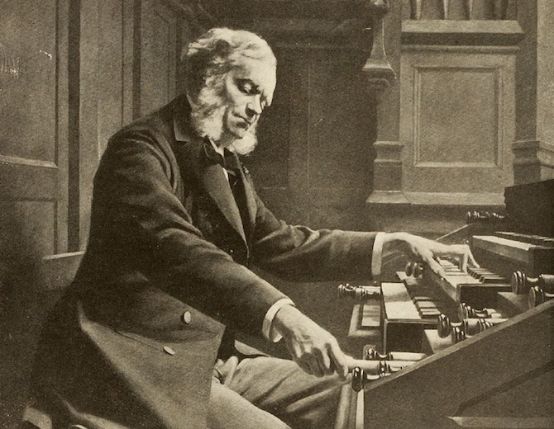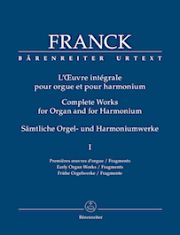Early works embedded editorially
The first volume of the complete edition of César Franck's organ works does not really present any new repertoire, but it does provide a context for the creation of the works in German.

This first of eight planned volumes of César Franck's collected organ and harmonium music presents four early works and two fragments. For many organ players, these are certainly new discoveries, as the works are not included in the canon of the composer's twelve "great" organ works.
The Fantaisie (Pièce) in A major was published in 1990 by Joël-Marie Fauquet (Editions musicales du Marais) and in 2008 in an edition corrected for certain printing errors by Bernhard Haas (Butz-Verlag). Fantaisie en ut majeur (early stages of the later C major Fantasie from the Six Pièces) and a Pièce en mi bémol majeur was published in 1973 by Schola Cantorum in an edition by Norbert Dufourcq. The charming Andantino in G minor was published in an anthology during Franck's lifetime, later also as a single edition, but was not given an opus number by him. In this respect, therefore, only the fragmentary works that have survived and are unfortunately not "complete" enough for a performance - a piece in E flat major, of which only the last five and a half pages have survived, and the beginning of a Prière (without conclusion) - are real new discoveries. Nevertheless, these are highly interesting testimonies to the composer, whose biographical background (for example, his "career start" as a piano-playing child prodigy until a fundamental rift with his father) and compositional development from sophisticated salon musician to mystic are still too little recognized. It is clearly recognizable that Franck conceived these works for early Romantic instruments (Saint-Roch 1842, Saint-Eustache 1853) and visibly struggled to formulate his tonal intentions because they did not yet correspond to Cavaillé-Coll's later standard and the more or less schematic "registration scenarios" possible with it. The composer's tonal language also occasionally still seems somewhat clumsy and (for example, in the accompanying figures) strongly inspired by the piano, but here and there certain "typical" Franck phrases already shine through.
The editor's excellent foreword now makes these connections accessible to a German and English-speaking audience, as Joël-Marie Fauquet's benchmark biography (Fayard 1999) is only available in French. The exemplary musical text and the detailed critical report provide a wealth of details on the works, their genesis and realization, and document editorial decisions in the light of already known editions. It will therefore be interesting to see whether new insights into Franck's "canonical" works already available in original editions (French publishers, reprinted by Butz) and new critical editions (Wiener Urtext, Henle) can be gained from the subsequent volumes.
César Franck: Complete Organ and Harmonium Works, Volume I: Early Organ Works / Fragments, edited by Christiane Strucken-Paland, BA 9291, € 29.95, Bärenreiter, Kassel








